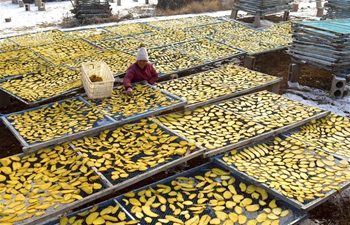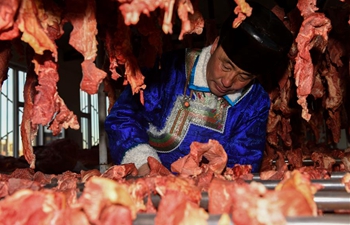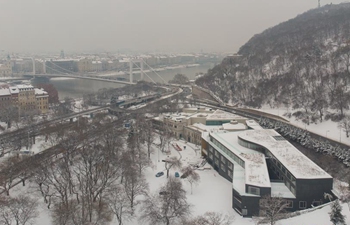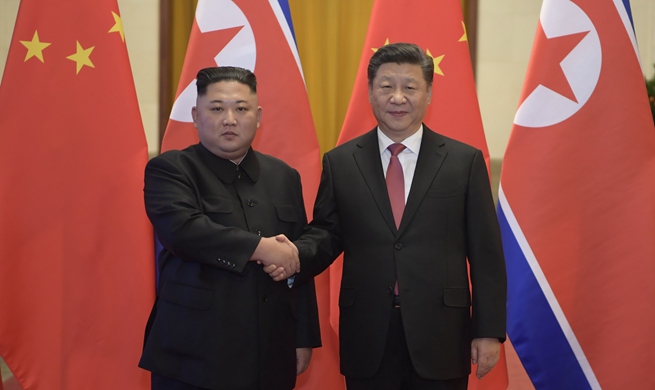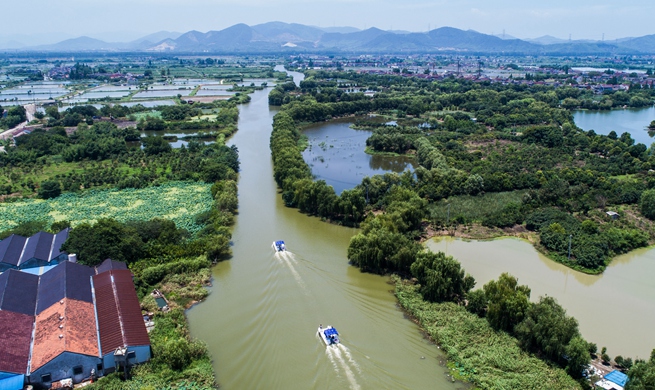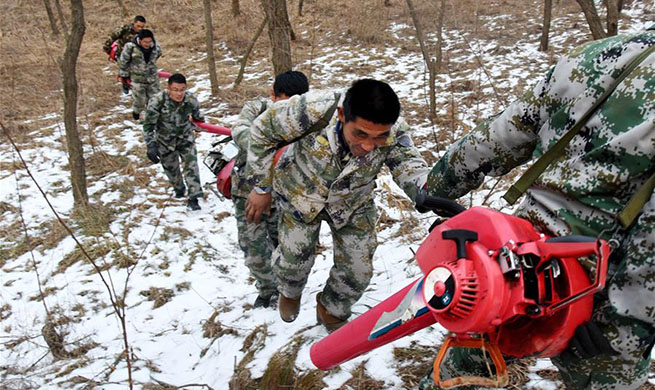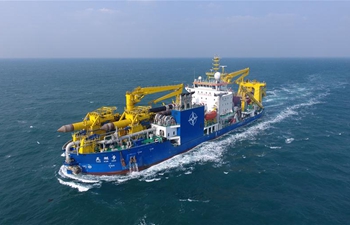LHASA, Jan. 10 (Xinhua) -- Economy in southwest China's Tibet Autonomous Region remains upbeat as it has recorded double-digit GDP growth for 26 consecutive years.
High-tech and digital industries, together with agriculture, tourism and culture, green industries and modern services, have become major industries, which contribute to high-quality growth in the region.
Tibet's GDP in 2018 was estimated at more than 140 billion yuan (21 billion U.S. dollars), up about 10 percent from 2017, Qizhala, chairman of the regional government, said in his government work report delivered Thursday at the second session of the 11th People's Congress of Tibet Autonomous Region.
Per capita disposable income for the region's rural residents grew about 13 percent, while for residents in urban areas it rose more than 10 percent.
In the report, Qizhala said that Tibet has "made decisive progress" in the battle against poverty, with 180,000 people lifted out of poverty. A total of 14.49 billion yuan was allocated to aid 218,000 people to relocate and live better lives.
The regional government also vowed to lift the last 150,000 people out of poverty and eradicate absolute poverty this year, which marks the 60th anniversary of democratic reforms in the region.
Meanwhile, credit spending expanded, with 368 billion yuan of loans granted to companies, up 20 percent. Small- and micro-sized companies, agriculture, anti-poverty projects, private businesses and startup entrepreneurs benefited from the loans.
This year the region aims to create new jobs for 50,000 people in cities and towns.
Tibet will open wider to the outside world in 2019, as it will enhance interconnectivity in terms of infrastructure to build "a big routeway of openness" towards South Asia, Qizhala said.
He said that up to five export bases will be developed in 2019. The region aims to increase foreign trade by at least 10 percent and border trade by at least 30 percent.
Tibet will continue to build the border economic cooperation area in Gyirong and the bonded area in Lhasa. The port of Zham will resume its passage for goods and several other ports will also open to the outside.
More than 30 million tourists visited Tibet in 2018, up 31.5 percent from the previous year, generating a tourism revenue of 49 billion yuan, according to the latest figures.
Local authorities have been trying to bolster the tourism industry with a raft of preferential policies rolled out to develop tourist attractions, hotels, tour buses and air routes, and hope that tourist numbers will exceed 40 million this year.
In the meantime, Tibet will continue to strengthen ecological protection, with 20-percent more investment earmarked for 2019.
The region will continue making efforts in protecting its forests, grasslands, wetlands and biodiversity, building ecological safety barrier, and curbing desertification and soil erosion, said Qizhala.
"This year marks the 70th anniversary of the founding of the People's Republic of China and a key year for the country to achieve its goal of building a moderately prosperous society in all aspects," he said.
"The regional GDP is expected to grow 10 percent this year. The average per-capita disposable income among the region's rural residents will increase by 13 percent, while for residents in urban areas it will rise at least 10 percent."




